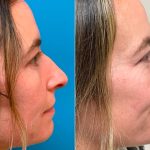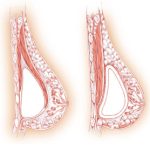Age is a natural process, and life will inevitably take its toll on your body. As you age, you often notice that your skin loses elasticity, and your wrinkles start to deepen. To combat these signs of aging, most people turn to cosmetic procedures like facelifts, Botox injections, and laser treatments. A facelift is an interventional surgery that you can do in the doctor’s office. It involves tightening the muscles around the eyes and jawline to prevent sagging skin or unwanted wrinkles. The surgery takes less than two hours and has a low risk of complications. It is also safe for people with other health concerns such as heart disease or high blood pressure. Here you’ll learn how to reverse the visible signs of aging with a facelift.
What Can Be Done with a Facelift?
A facelift can be done to tighten the muscles of the face, help relieve sagging skin, or correct any other facial deformities. Facelifts can also change the appearance of a patient’s jawline and neck. The surgery works by tightening facial muscles responsible for looking younger and more youthful. This is done with a procedure called a “minimally invasive facelift.” A minimally invasive facelift is similar to in-office liposuction. Still, it involves using a tiny needle inserted into the subcutaneous tissue (the fat layer under the skin) to pull out excess fat.
How Does a Facelift Work?
A facelift is performed to tighten facial muscles and restore a youthful appearance. You can do it in the office with local anesthesia, but it is also possible to have the procedure done under general anesthesia in an operating room setting. A patient’s face is numbed with local anesthesia during a typical facelift, while surgical instruments remove excess skin and tighten facial muscles. This procedure can be done on both sides of the face simultaneously or one side at a time. The surgeon may also perform other procedures such as liposuction or neck lift surgery during a facelift to change how your jawline looks and make your neck appear more youthful.
Who Is a Candidate for Facelift Surgery?
Anyone with signs of aging in the jawline and around the eyes can be a candidate for a facelift. Additionally, people who have had previous facial surgeries or those who have certain health conditions may need a facelift too. The most common age for facelift surgery is 50-70 years old. However, it’s not uncommon for people aged 25-50 to receive this treatment as well.
Negotiating Risks and Costs of Surgery
It is important to negotiate the risks and costs of surgery with your doctor. Many variables can affect the outcome of your surgery. Some factors include the patient’s health status, age, and the type of surgery performed. The risks associated with facelifts vary depending on the area of skin being addressed.
In general, there are three types of facelift surgeries:
• Subcision: This type of surgery corrects excess fat in a limited area around the eyes or jawline. It is effective for reducing wrinkles on the face only.
• Mid-face lift: This type of procedure lifts facial muscles around the eyes and jawline to prevent sagging skin and unwanted wrinkles.
• Full-face lift: This type of surgery lifts facial muscles all over a person’s face to improve the vagueness in their cheeks, reduce excess sagging skin, correct drooping eyelids, and restore volume to their lips.
The cost for this procedure depends on whether or not you have insurance coverage for it and where you live in relation to a surgeon who specializes in facelifts. If you grow older without having cosmetic procedures like facelifts, it will be more difficult to reverse some signs of aging later on in life because your skin will have lost its elasticity, and your wrinkles will deepen.
Recovery Time and Healing Process
You can expect to experience some pain and discomfort, but the recovery process will be relatively quick in general. For most patients, you can expect that you’ll need about two days of rest before returning to your normal routine. In many cases, a facelift may only require one visit to the doctor’s office.
The healing process will vary depending on the patient’s overall health and medical history. However, most procedures are performed under local anesthesia, so there is usually no pain. Your skin will heal quickly because of its regenerative properties. The risk of scarring is minimal as long as you take care of your face during recovery.
What to Expect After Surgery
Typically, facelift surgery will involve the removal of extra skin and fat from around the eyes to correct excess aging. In some instances, fat is removed from the chin as well. The procedure can also involve tightening the muscles of the face to tighten loose skin.
The surgeon will place stitches on each side of your mouth to prevent excess bleeding, and you may be given a local anesthetic for the procedure. Recovery time will vary depending on your health history and how long it takes for your body to heal. Recovery time is approximately two weeks for most people, but some may require up to six weeks before returning to work or daily activities.
After surgery, you’ll be given instructions on how to care for your new look by using bandages and gauze pads that are provided by your doctor or at home without having to go back into the office. You’ll need these supplies throughout the healing process so that you don’t have anything obstructing your newly-removed skin or pressure points. The results after facelift will be a more youthful look.
In conclusion, a facelift has shown to be a wonderful and effective rejuvenation procedure for patients of all ages who are suffering from aging effects. The face is a vital part of the body that affects how you feel about yourself and how others perceive you. A facelift can make you feel more youthful, confident, and ready to take on the world once again.
Image Credit:- Foto di Anastasia Gepp da Pixabay
Image Reference:- https://pixabay.com/it/photos/donna-faccia-ritratto-le-persone-3083390/







